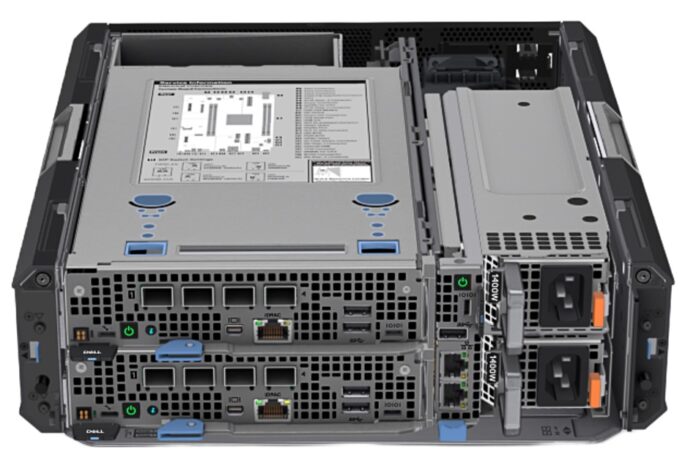Are you spending too much time managing your IT infrastructure and not enough time focusing on your core business? In today’s rapidly evolving digital landscape, agility and efficiency are paramount. That’s where VxRail hyperconverged infrastructure (HCI) comes in.
VxRail, built on VMware vSAN, simplifies IT by converging compute, storage, and networking into a single, easily managed appliance. This means faster deployments, streamlined operations, and reduced complexity, freeing up valuable resources and empowering your team to drive innovation.
This article will explore the key benefits of VxRail, examining how it can transform your IT environment, improve performance, and reduce costs. We’ll delve into its architecture, management capabilities, and the real-world advantages of embracing a hyperconverged approach with VxRail, giving you the information you need to determine if it’s the right solution for your organization.
Understanding VxRail Hyperconverged Infrastructure
VxRail stands out as a pre-configured, fully integrated, and tested hyperconverged infrastructure (HCI) appliance. It’s designed to simplify IT operations and accelerate digital transformation initiatives.
Think of it as a building block for your modern data center. VxRail combines compute, storage, and virtualization resources into a single platform. This consolidation streamlines management and lowers operational costs.
At its core, VxRail leverages VMware vSphere for virtualization. It uses vSAN for software-defined storage and vCenter Server for unified management. This deep integration ensures a consistent and seamless user experience.
VxRail is ideal for organizations looking to modernize their infrastructure, improve agility, and reduce complexity. It supports a wide range of workloads, from general-purpose virtualization to demanding applications.
Key Benefits of VxRail
Adopting VxRail brings numerous advantages to your IT environment. These span from simplified operations to enhanced performance and scalability, boosting business agility.
One huge plus is reduced IT complexity. VxRail automates many manual tasks, freeing up your team to focus on strategic initiatives. Automated lifecycle management keeps everything running smoothly.
Another important aspect is improved scalability and performance. Easily add nodes to scale your infrastructure as needed. This ensures your environment can adapt to changing business demands, delivering consistent results.
VxRail enhances data protection and disaster recovery. Built-in data protection features ensure business continuity and minimizes downtime. This provides peace of mind in case of unexpected events.
Cost savings are also a significant advantage. Consolidation of resources reduces capital expenditure and operational expenses. Optimized resource utilization contributes to long-term savings.
VxRail Architecture and Components
The architecture of VxRail is crucial to understanding its capabilities. It consists of several key components working together to deliver a comprehensive HCI solution.
vSphere provides the virtualization layer. It allows you to run multiple virtual machines on a single physical host. This optimizes resource utilization and lowers hardware costs.
vSAN delivers software-defined storage. It pools storage resources from multiple nodes to create a shared storage pool. This simplifies storage management and improves storage utilization.
vCenter Server provides a single pane of glass for managing your entire VxRail environment. It streamlines tasks such as provisioning, monitoring, and troubleshooting. Centralized control is key.
VxRail Manager automates lifecycle management tasks. It simplifies upgrades, patching, and configuration management. This ensures your environment is always up-to-date and secure.
Use Cases for VxRail
VxRail can be used across various industries and applications. Its versatility makes it an excellent choice for many IT initiatives.
It’s well-suited for general-purpose virtualization. Consolidate workloads and improve resource utilization. This simplifies management and reduces costs, improving overall performance.
VxRail shines in virtual desktop infrastructure (VDI) deployments. It provides the performance and scalability needed to support large numbers of users. This delivers a great user experience.
Big data and analytics also benefit from VxRail. Process large volumes of data and gain insights faster. Its scalable architecture supports demanding analytics workloads.
Edge computing is another compelling use case. Deploy VxRail at the edge to process data closer to the source. This reduces latency and improves application performance, improving responsiveness.
Getting Started with VxRail

Deploying VxRail is straightforward, but requires some planning. Here are some considerations for getting started.
First, assess your current infrastructure and identify your business requirements. This helps determine the right VxRail configuration for your needs. This step is crucial for long-term success.
Next, choose the appropriate VxRail model based on your workload requirements. Dell Technologies offers a range of VxRail models to suit different use cases. Be sure to choose wisely.
Engage with a qualified Dell Technologies partner for deployment assistance. They can help you plan, configure, and deploy VxRail. This ensures a smooth implementation process, reducing errors.
Finally, monitor and optimize your VxRail environment after deployment. This ensures optimal performance and resource utilization. Regular monitoring will help you identify areas for improvement and ensure things run smoothly.